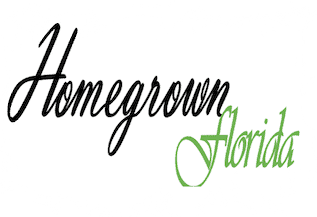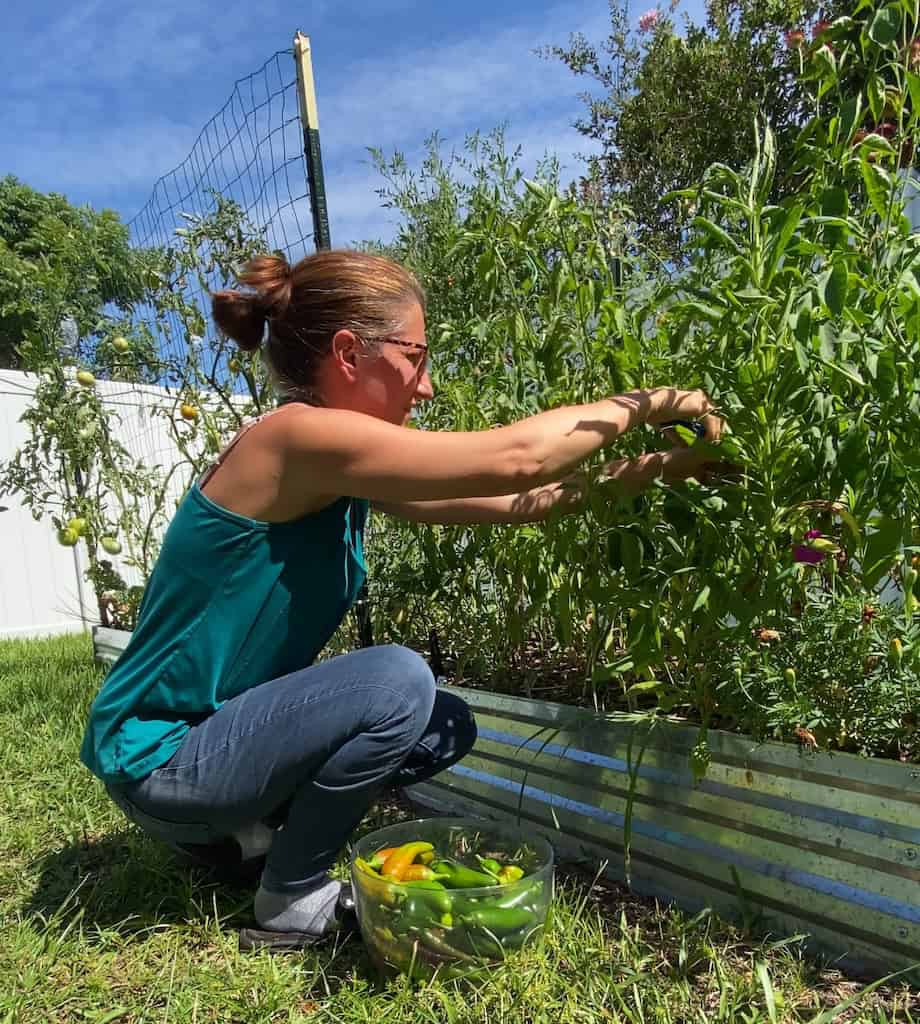If you’ve followed along on my Homegrown Florida journey, you know I’ve made a lot of Florida gardening mistakes over the years. And I’m not shy about it! Because every single mistake has taught me something that’s made my garden more productive, more resilient, and honestly, more fun. Today, I’m breaking down the five biggest Florida gardening mistakes I’ve made here in Central Florida to help you skip some of the trials and head straight for the harvest. These lessons are all grounded in my personal experience, right in our unique Florida climate. Let’s dig in.
Table of Contents
This post may contain affiliate links. Read full disclosure here.
1. Skipping Mulch Early On
This one feels like such a rookie move now, but for years—I mean years—I didn’t use mulch. Back at our first house, I was planting straight into the beds with no thought to what was happening on the surface of the soil. And you know what? The plants suffered.

Mulch is one of the most powerful tools you can use in your Florida garden. It helps retain moisture in our sandy soil (which dries out FAST), it cools the soil in our blazing heat, and it breaks down to feed the soil with organic matter—something our native sand is desperately lacking.
Now, I mulch every single bed. And I’ve gotten creative with it too. I’ve used shredded wood mulch, compost, dried leaves, even sand when I didn’t have anything else handy. Yes—plain old Florida sand! It’s not the perfect mulch, but it insulated the soil enough to help my spring potatoes thrive. I’ve even chopped up palm fronds to mulch the beds, especially around root crops like potatoes that need consistent moisture. Palm fronds break down slowly, which isn’t ideal, but hey—if I’ve got them, I’m going to use them.
Big Florida gardening mistakes takeaway? Don’t leave your soil naked. If you’re just getting started, grab whatever organic material you have access to and get it on your beds. The benefits are too good to ignore, and it’s one of the easiest ways to give your plants a head start.
2. Bad Timing with Planting
I’m pretty sure every Florida gardener has messed up their planting calendar at least once. Our seasons are just weird compared to the rest of the country. We don’t have four clean seasons—what we have is basically:
- Winter: mid-December through mid-February (and even then, we might only get a handful of real frosts)
- Spring: February to April
- Summer: May through September (hot, humid, pest-ridden)
- Fall: October through early December
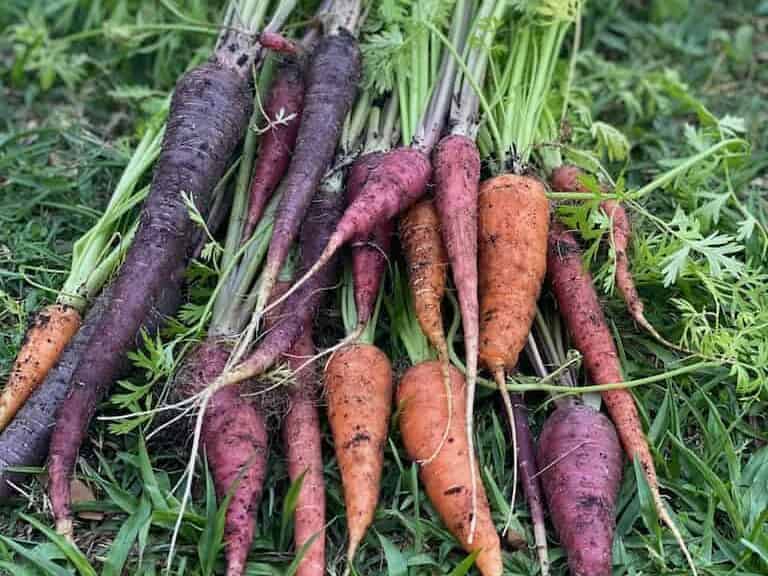
So if you try to follow a seed packet from up north that says “plant in spring after danger of frost,” you’ll be too late for half of what you’re trying to grow. This is the biggest Florida gardening mistakes made by beginners here in Florida.
I’ve planted broccoli in June. (Don’t do that.) I’ve planted tomatoes in January and then again in March just to watch the later ones flower without fruiting. Tomatoes, for example, need cooler nights to set fruit. Once it gets too hot—think 85+ days and 70+ nights—they’ll keep growing, but they won’t produce. Same goes for a lot of your warm-weather crops. So if you wait too long, you’re going to be staring at leafy green plants that won’t give you anything edible.
Cabbages? Oh, I’ve done those wrong too—especially purple ones, which take forever to mature. I once tried to sneak in a late planting in February, and those babies were still struggling come May. The heat caught up before the heads could form properly.
So what’s the fix? Learn our Florida-specific timing. It’s not always intuitive, and you have to work with microclimates too—like how much sun your yard gets, when the frost typically hits your zip code, and what pests show up in your area.
Need help planning your garden beyond this month? Check out What to Plant Each Season in Florida for a full breakdown of the best vegetables, herbs, and flowers to grow throughout the year. It’s your go-to guide for staying ahead of the seasons and getting the most out of your Florida garden.
3. Not Starting Enough Plants
This one stings, because it’s such an easy thing to avoid in hindsight. For years, I’d decide I wanted, say, six tomato plants. So I’d start six seeds. Logical, right?
Wrong. Biggest Florida gardening mistakes.
Plants die. Seeds fail to germinate. Birds snatch seedlings. Transplants sulk and never recover. And when that happens and you only have what you planned for, you’re stuck. There’s no backup.

Now, I always start at least double what I think I need. For tomatoes, that might mean starting a tray of twelve, even if I only have room for six in the garden. Same for cucumbers, beans, squash—basically everything. It gives me room to be selective and to recover from any unexpected losses. And let’s be honest, unexpected losses happen all the time in Florida gardens. Between the sun, the storms, and the pests, something is always going sideways.
Having extra seedlings also gives you a little buffer emotionally. You don’t feel defeated when a plant doesn’t make it, because you’ve got another ready to go in its place. And if they all make it? Awesome! You can gift the extras to friends, tuck them into containers, or trade them with other gardeners in your community.
Gardening is so much smoother when you’ve got options—and it starts with sowing just a few more seeds.
4. Overcrowding—Especially in Containers
If you’ve seen my GreenStalk planters, you know I grow a lot in containers. They’re incredibly efficient, especially for folks with small yards or patios. But early on, I treated container gardening just like my raised beds—and that led to some serious problems.

In raised beds, I can fudge spacing a little. My beds are open to the ground, so roots can spread deeper. But in a container? Roots hit a wall. Literally. If you overcrowd in a container, your plants compete for every drop of water and every speck of nutrition—and most of the time, they all suffer.
GreenStalk says you can grow three bush beans per pocket. Technically true—they will grow. But I’ve found that two is the sweet spot for productivity. Sometimes even just one plant gives me the best harvest. That’s because the fewer plants you have per pocket, the more resources each one gets, and the more likely you are to get a decent yield.
This also applies to herbs, especially perennials. My chocolate mint, thyme, sage, and lavender need room to spread. I give each one a tier of the planter and let them take over slowly, expanding with cuttings as they fill out. It’s not just about how many plants you can fit—it’s about how much they need to thrive.
So if you’re using containers, go bigger than you think you need, and plant fewer than you want. It feels counterintuitive, but your plants will be healthier, and your harvests will be better.
5. Neglecting Fruit Tree Pruning
When I first planted fruit trees, I had this whole “let nature do its thing” mindset. I didn’t prune, didn’t shape, just watered and walked away. And while that might work in an open orchard with acres of space, it doesn’t fly in a backyard garden—especially not in Florida where everything grows fast.
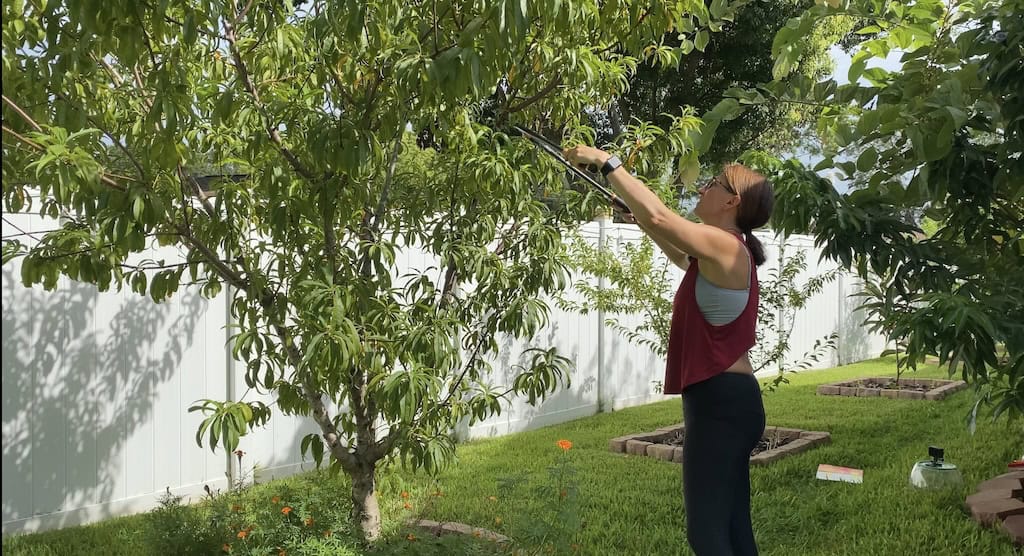
Trees that aren’t pruned become giants. They shade out other plants, outgrow their space, and put their energy into size instead of fruit production. That peach tree I brought from our last house? It should be producing 600 peaches a year. Right now, I get maybe 300 because I’ve kept it small—but here’s the thing: I can grow a plum tree right next to it. Two fruits, same footprint.
That’s why I’m big on dwarf trees and regular pruning now. Heading cuts keep trees short and strong. Thinning lets in light and air, reducing disease and improving fruit quality. It’s all about balance—training the tree to be productive instead of just big.
If you’re new to fruit trees, don’t wait to start pruning. The earlier you start, the easier it is to shape the tree and keep it manageable. You don’t need fancy tools or degrees—just a willingness to get in there and guide the growth. Check out my summer fruit tree pruning guide HERE.
Gardening in Florida isn’t always easy, but it’s always worth it. Each Florida gardening mistakes has been a stepping stone toward a better, more productive garden. And if I can help you skip a few of those missteps, then we’re both winning.
If you’re looking for even more detailed guidance on growing veggies here in Florida—like when to start seeds, how to manage pests, and what varieties really thrive—check out my ebook! It’s got a chapter for every single vegetable and is packed with everything I’ve learned over the years gardening in Florida.
Happy gardening, friends! And remember, it’s not about being perfect—it’s about learning, growing, and enjoying the journey.
